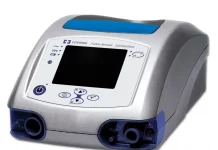Transforming Heart Skin Cells in Muscle Cells: Scientists at the Gladstone Institutes in San Francisco , California , USA , have developed a new method that allows for more efficient and more complete skin cells into cells that are virtually indistinguishable from the heart muscle cells reprogramming. These results, based on animal models and described in the latest issue of ‘ Cell Reports ‘ offer more optimism in the search for a way to regenerate lost muscle in a heart attack .
Heart disease is the leading cause of death, but recent advances in science and medicine have improved the chances of surviving a heart attack. In the United States, about 1 million people has survived an attack, but live with failure, ie , a chronic condition in which the heart, having lost muscle during the attack, not working at full capacity, so investigators begin to look to cell reprogramming as a way to regenerate the damaged heart muscle.
Reprogramming skin cells into heart cells, according to lead researcher Gladstone, Deepak Srivastava, has required the introduction of several genetic factors to stimulate the process.
However, scientists have recognized potential problems with this method based on the genes, so some experts, including Gladstone senior investigator Sheng Ding , have adopted a somewhat different approach.
“Scientists have previously shown that the inclusion of four to seven genetic factors may lead to reschedule a skin cell directly into a beating heart cell,” says Dr. Ding, lead author and professor of pharmaceutical chemistry at the University of California, San Francisco (UCSF), with which Gladstone is affiliated. ” But in my lab , we set out to see if we could carry out a similar transformation to eliminate or at least reduce the dependence of this type of genetic manipulation.”
The researchers used cells taken from adult mice to detect chemical compounds , called ” Small Molecules ” that could replace genetic factors.
Ding and his team previously harnessed the power of small molecules to reprogram skin cells into neurons and , more recently, the pancreatic cells that produce insulin , so they understood that a similar technique could be used to do the same with cells heart .
“After trying various combinations of small molecules , we have reduced the list to a ‘ cocktail ‘ of four molecules , we call SPCF that could guide skin cells to become heart cells ,” says Gladstone postdoctoral scholar Haixia Wang , lead author of the article. “
These newly reprogrammed cells expressed some of the tremors and contractions that are normally seen in cells of the mature heart, but the transformation was not quite complete ,” he says.
Thus, Wang Ding and doctors decided to add a genetic factor , called Oct4 , the small molecular cocktail , allowing a cell to generate heartbeat completely reprogrammed. “Once Oct4 add to the mix, we observed clusters of cells contracted after a period of only 20 days – highlights Ding -.
Surprisingly, further analysis revealed that these cells showed the same patterns of gene activation and electrical signaling normally observed in the ventricles of the heart. “
The authors of this study believe that these results may point to a more convenient method for reprogramming because ventricular heart cells are the type of cells typically lost during a heart attack.
Future developments of this team and other researchers are likely to focus on improving conversion efficiency and duplicate data from adult human cells.




